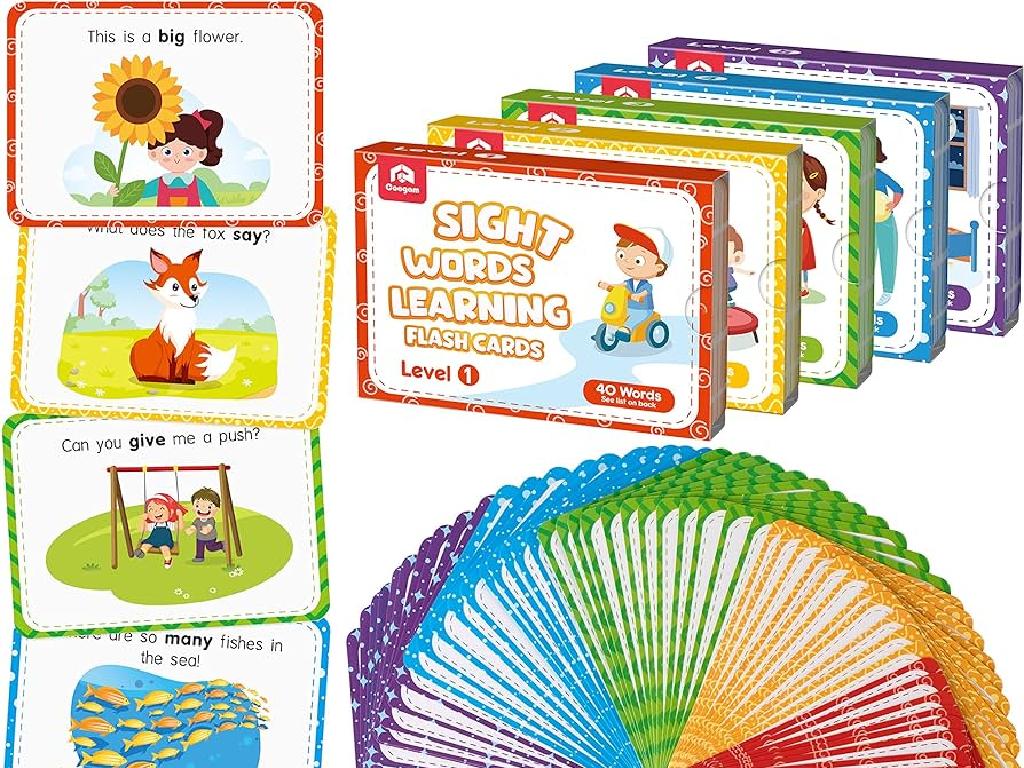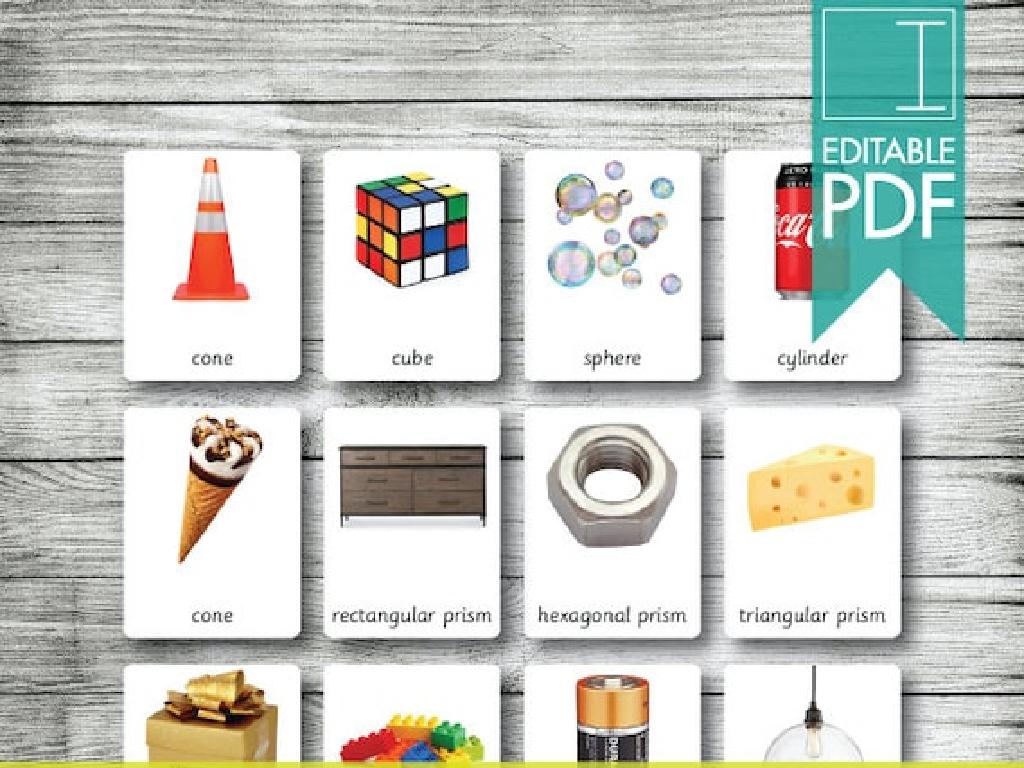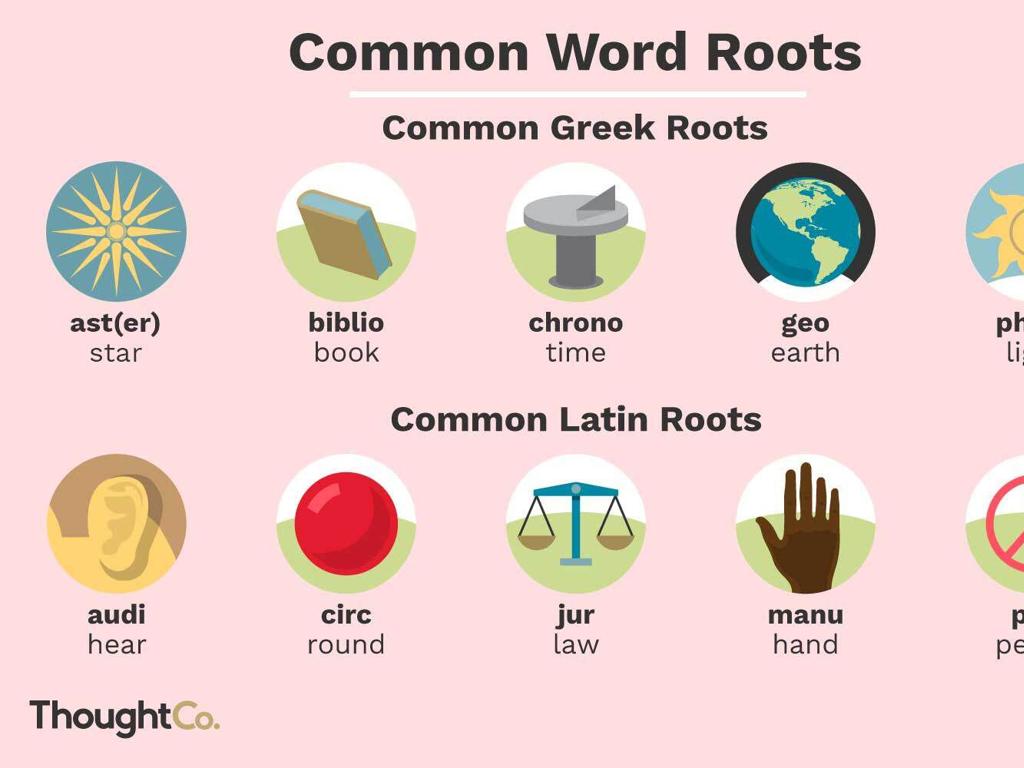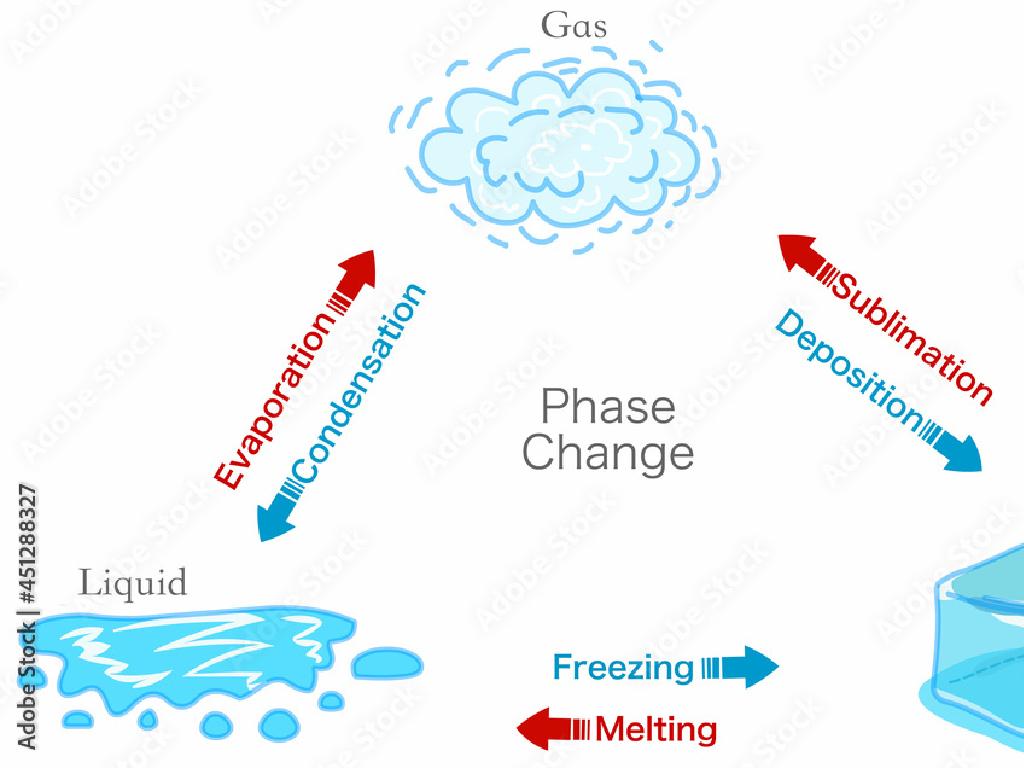Classify Elementary Substances And Compounds Using Chemical Formulas
Subject: Science
Grade: Eighth grade
Topic: Atoms And Molecules
Please LOG IN to download the presentation. Access is available to registered users only.
View More Content
Atoms & Molecules: The Building Blocks of Matter
– Atoms: The basic units of matter
– Atoms are the smallest particles that define the chemical elements.
– Molecules: Atoms joined together
– Molecules form when two or more atoms bond together, e.g., H2O.
– Chemical formulas: Molecule representation
– Symbols and numbers in formulas depict the types and numbers of atoms.
– Significance of chemical formulas in science
– Chemical formulas help us understand composition and reactions.
|
This slide introduces the fundamental concepts of atoms and molecules, which are essential for understanding the composition of matter. Atoms are the smallest units that retain the properties of an element, while molecules are groups of atoms bonded together, representing the smallest unit of a chemical compound that can take part in a chemical reaction. Chemical formulas are shorthand representations of molecules, indicating the types and quantities of atoms present. Emphasize the importance of chemical formulas in predicting the outcomes of chemical reactions, understanding the properties of substances, and communicating scientific information efficiently. Provide examples of simple molecules and their chemical formulas to illustrate the concept.
Elementary Substances in Chemistry
– Define elementary substance
– A pure chemical substance consisting of one type of atom
– Examples of elementary substances
– Elements like oxygen (O2), gold (Au), and helium (He)
– Properties of elementary substances
– They have unique physical and chemical properties
|
This slide introduces the concept of elementary substances, which are the building blocks of matter. Each elementary substance is made up of only one type of atom, making it pure. Common examples include oxygen, which is essential for respiration, gold, which is a valuable metal, and helium, a gas used in balloons. These substances have distinct properties that can be measured and observed, such as melting point, boiling point, and reactivity. Understanding these properties helps us to classify and use elements in various scientific and industrial applications. Encourage students to think of more examples and to consider the properties that make each element unique.
Understanding Compounds in Chemistry
– Definition of a compound
– A substance formed when two or more elements chemically bond together.
– Compounds vs. Elements
– Elements are pure substances with only one type of atom; compounds consist of two or more different atoms.
– Common compound examples
– Water (H2O), Carbon Dioxide (CO2), and Sodium Chloride (NaCl).
– Chemical formula representation
– Compounds are represented by formulas showing the elements and the number of atoms of each.
|
This slide introduces students to the concept of compounds in chemistry. A compound is a substance that forms when two or more different elements combine through a chemical reaction, resulting in a molecule with unique properties. Unlike elements, which are pure substances made of only one type of atom, compounds consist of molecules made up of atoms from different elements. Provide examples of common compounds and their chemical formulas, such as water (H2O), carbon dioxide (CO2), and table salt (sodium chloride, NaCl). Emphasize the importance of chemical formulas in representing the specific combination of elements in a compound. Encourage students to think of other compounds they encounter in daily life and to practice writing their chemical formulas.
Chemical Formulas: Chemistry’s Language
– Understanding chemical symbols
– Elements are represented by 1 or 2 letter symbols, e.g., H for Hydrogen.
– Reading chemical formulas
– Formulas show elements & ratios, e.g., H2O has 2 Hydrogen and 1 Oxygen.
– Writing formulas for compounds
– Combine symbols & use subscripts for quantity, e.g., CO2 for Carbon Dioxide.
– Practice with common compounds
– Work on examples like NaCl for salt, and H2SO4 for sulfuric acid.
|
This slide introduces the basic concepts of chemical formulas, which are essential for classifying substances and compounds in chemistry. Start by explaining the symbols used to represent elements and how they form the alphabet of chemistry. Then, demonstrate how to read chemical formulas by identifying the elements and their quantities. Move on to writing formulas, emphasizing the importance of correct subscripts to denote the number of atoms. Provide practice with common compounds to solidify understanding. Encourage students to memorize some common elements’ symbols and practice writing formulas for compounds they encounter daily.
Classifying Substances with Chemical Formulas
– Criteria for substance classification
– Based on atomic composition and chemical properties
– Differentiating elements and compounds
– Elements contain one type of atom; compounds have two or more
– Utilizing the Periodic Table
– The Periodic Table groups elements by similar properties
– Practice with chemical formulas
– Identify substances using H2O, CO2, NaCl examples
|
This slide introduces the criteria for classifying substances into elements and compounds, emphasizing the importance of understanding chemical formulas. Students should learn that elements are pure substances with only one type of atom, while compounds consist of two or more different atoms bonded together. The Periodic Table is a crucial tool for classification, as it organizes elements based on atomic number and similar chemical properties. Provide examples of common compounds and their chemical formulas, such as water (H2O), carbon dioxide (CO2), and sodium chloride (NaCl), and guide students to practice classifying these substances. Encourage interactive learning by having students work on examples in groups and discuss their classification reasoning.
Chemical Formulas in Action
– Everyday chemical reaction examples
– Combustion in cars (C8H18 + O2 CO2 + H2O)
– Learn formulas with experiments
– Mixing vinegar and baking soda (CH3COOH + NaHCO3 CO2 + H2O + CH3COONa)
– Chemical formulas in industry
– Pharmaceuticals, agriculture, manufacturing
– Understanding the impact
|
This slide aims to show the practical application of chemical formulas in everyday life and industry. Start by discussing common chemical reactions, such as the combustion of gasoline in cars, which can be represented by a chemical formula. Move on to simple experiments that can be conducted in the classroom, like the reaction between vinegar and baking soda, to help students understand how formulas represent the reactants and products. Highlight the importance of chemical formulas in various industries, including pharmaceuticals, agriculture, and manufacturing, where they are crucial for creating products safely and efficiently. Encourage students to think about how these formulas affect their daily lives and the broader economy.
Class Activity: Creating Chemical Formulas
– Group activity: combine elements
– Each group presents their compound
– Discuss properties of compounds
– Discuss how the properties differ from individual elements
– Reflect on the activity’s learning
– What did we learn about compound formation?
|
This class activity is designed to engage students in hands-on learning about chemical formulas. Divide the class into small groups and provide each with a set of element cards. Their task is to combine elements to form compounds, write down the chemical formula, and present their findings to the class. After presentations, lead a discussion on how the properties of the compounds differ from the individual elements they are made of. This will help students understand the concept of compound formation and the significance of chemical formulas. Possible activities: 1) Create a salt compound, 2) Combine hydrogen and oxygen to form water, 3) Explore carbon dioxide formation, 4) Experiment with creating a simple organic molecule like methane. Ensure safety guidelines are followed during any physical combining of elements.
Conclusion: Substances, Compounds, and Formulas
– Recap: Elementary Substances
Elementary substances consist of a single type of atom, e.g., O2 (oxygen).
– Recap: Compounds
Compounds are made of two or more different atoms bonded, e.g., H2O (water).
– Understanding Chemical Formulas
Chemical formulas represent the elements and the number of atoms in a substance.
– Open floor for Q&A
|
This slide aims to summarize the key points of the lesson on elementary substances and compounds. Start by reviewing the definition and examples of elementary substances, which are pure chemical substances that consist of a single type of atom. Then, move on to compounds, which are substances formed when two or more different types of atoms bond together. Emphasize the importance of chemical formulas in representing the composition of these substances and how they help us understand the properties and behaviors of different materials. Conclude the presentation by inviting questions from the students to clarify any doubts and to reinforce their understanding of the topic.






